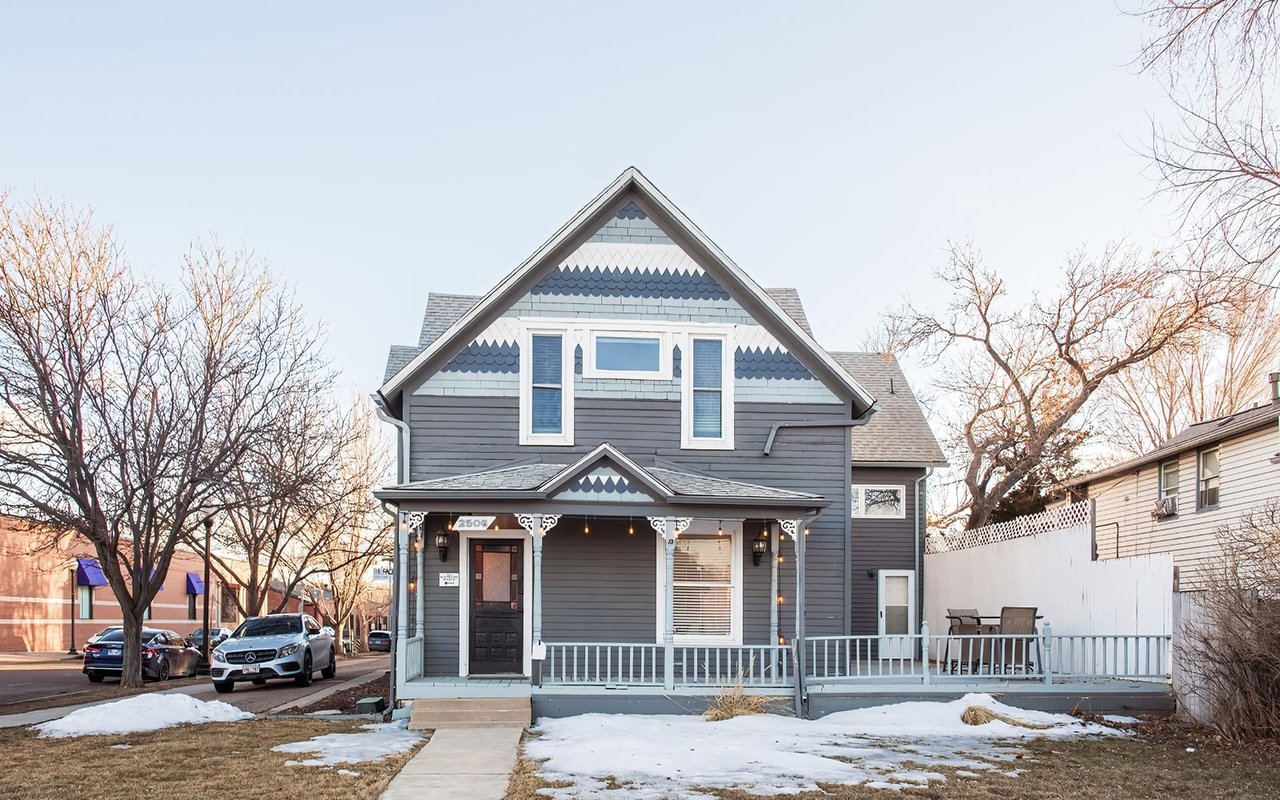Littleton, Colo., boasts a rich history and a captivating architectural landscape. Beyond its scenic beauty and vibrant community, Littleton architecture showcases a fascinating blend of styles, each contributing to the unique character of this charming city. This guide highlights some of Littleton's most notable architectural landmarks, showcasing the city's unique blend of past and present.
The Littleton Town Hall Arts Center
The Littleton Town Hall Arts Center, built in 1920, is a cornerstone of Littleton architecture. This historic building originally served as the city hall and has been transformed into a vibrant arts center. Its Colonial Revival style, characterized by symmetrical facades and classical details, adds charm to the downtown area.
The building’s signature characteristics include a symmetrical facade with red stucco walls, arched windows, and a grand entrance with a decorative tile-hipped roof. Today, the Town Hall Arts Center hosts theater productions, art exhibits, and community events, making it a cultural hub for residents and visitors alike. Its preservation and adaptive reuse demonstrate Littleton's commitment to maintaining its architectural heritage.
The building’s signature characteristics include a symmetrical facade with red stucco walls, arched windows, and a grand entrance with a decorative tile-hipped roof. Today, the Town Hall Arts Center hosts theater productions, art exhibits, and community events, making it a cultural hub for residents and visitors alike. Its preservation and adaptive reuse demonstrate Littleton's commitment to maintaining its architectural heritage.
The Littleton Museum
The Littleton Museum offers a captivating example of Littleton architecture in a different style. The building features a streamlined façade with geometric shapes, horizontal bands of windows, and a stylized metal entrance canopy. While Art Deco is known for its decorative elements, the Littleton Museum prioritizes functionality. The design incorporates large windows for natural light and a well-organized interior layout that optimizes space for displaying exhibits and collections.
The Carnegie Library
The Carnegie Library, now part of the Littleton Museum, is another significant example of Littleton architecture. Built in 1917 with funding from philanthropist Andrew Carnegie, this building features a classical design with brick construction, large windows, and a prominent entrance. The library served the community until 1965 and now houses historical exhibits. Its enduring architecture and historical significance make it a must-see landmark for those interested in the city's heritage.
The J.D. Hill General Store
The J.D. Hill General Store, established in 1892, is a testament to the commercial architecture of Littleton's early days. This charming building features a false front façade, a common design element in frontier towns, giving it a distinct old-west appearance. Located in Historic Downtown Littleton, the store now operates as a boutique, maintaining its historical charm while serving modern purposes. The preservation of such buildings highlights the importance of Littleton architecture in connecting the past with the present.
The Richard Little House
The Richard Little House, built in 1867, is one of the oldest surviving homes in Littleton. This Victorian-style residence, with its ornate trim and steeply pitched roof, reflects the architectural trends of the late 19th century. The house has been carefully restored and is now part of the Littleton Historical Museum. Visitors can tour the home and gain insight into the city's early days, making it a valuable piece of Littleton architecture and history.
Littleton Cemetery Chapel
The Littleton Cemetery Chapel, constructed in 1890, is a beautiful example of Gothic Revival architecture. The chapel features pointed arch windows, intricate woodwork, and a steeply pitched roof, creating a solemn and serene atmosphere. The chapel continues to serve the community as a place for reflection and remembrance. Its architectural significance and tranquil setting make it an important landmark in Littleton.
Geneva Lodge
Geneva Lodge, built in 1903, is a stunning example of Arts and Crafts architecture in Littleton. The lodge's design emphasizes handcrafted details, natural materials, and harmony with the surrounding landscape. Originally a private residence, Geneva Lodge is now used for events and gatherings. Its unique architectural style and historical significance contribute to the diverse tapestry of Littleton architecture.
The Arapahoe Community College Main Building
The Arapahoe Community College Main Building, completed in 1974, showcases modernist architectural principles. Its clean lines, functional design, and use of concrete and glass reflect the architectural trends of the mid-20th century. The building serves as the heart of the college campus, providing educational facilities and administrative offices. Its modern design contrasts with the historic buildings in Littleton, illustrating the evolution of Littleton architecture over the decades.
The Buck Center
The Buck Center, built in 1937, is an example of Art Deco architecture in Littleton. The building features geometric patterns, decorative details, and a streamlined form, characteristic of the Art Deco movement. Initially serving as a community center, the Buck Center has been repurposed for various uses. Its distinctive style adds a unique element to Littleton's architectural landscape.
The Harwood House
The Harwood House, constructed in 1891, is a fine example of Queen Anne architecture. The house features a variety of textures and materials, decorative gables, and a wrap-around porch, typical of the Queen Anne style. Now part of the Littleton Historical Museum, the Harwood House offers visitors a glimpse into the architectural and social history of the late 19th century. Its preservation underscores the importance of maintaining historical landmarks in Littleton architecture.
The Littleton Courthouse
The Littleton Courthouse, built in 1907, is iconic in the city's downtown area. The courthouse's Beaux-Arts architecture is characterized by grand columns, a symmetrical façade, and elaborate ornamentation. The courthouse continues to function as a government building, symbolizing the enduring nature of Littleton architecture. Its prominent location and historical significance make it a key landmark in the city.
Residential Architecture
Beyond these prominent landmarks, Littleton architecture offers a captivating blend of styles:
- Victorian-Era Homes: Littleton boasts a charming collection of Victorian-era homes, showcasing variations of Queen Anne, Italianate, and Gothic Revival styles. These historic residences contribute to the city's unique character and sense of place.
- Art Deco Commercial Buildings: Several commercial buildings along Littleton Boulevard exemplify the Art Deco style. These structures add visual interest to the streetscape and provide a glimpse into the architectural trends of the early 20th century.
Littleton takes pride in its architectural heritage. Historic districts safeguard the character of specific neighborhoods, while restoration projects breathe new life into older buildings. This commitment to preservation ensures that Littleton's architectural tapestry continues to tell the story of the city's evolution.
About Patti Maurer Williams
For your real estate needs in Littleton, CO, work with Patti Maurer Williams. Combining her love for interior design with a passion for helping clients, Patti is known for her attentiveness, honesty, and integrity. Clients appreciate her reliability, trustworthiness, and proactive approach, ensuring a smooth and positive real estate journey. With personal experience in buying and selling properties, Patti builds strong relationships and makes each transaction personalized and positive.
Contact Patti Maurer Williams today to start your real estate journey in Littleton.
Contact Patti Maurer Williams today to start your real estate journey in Littleton.




